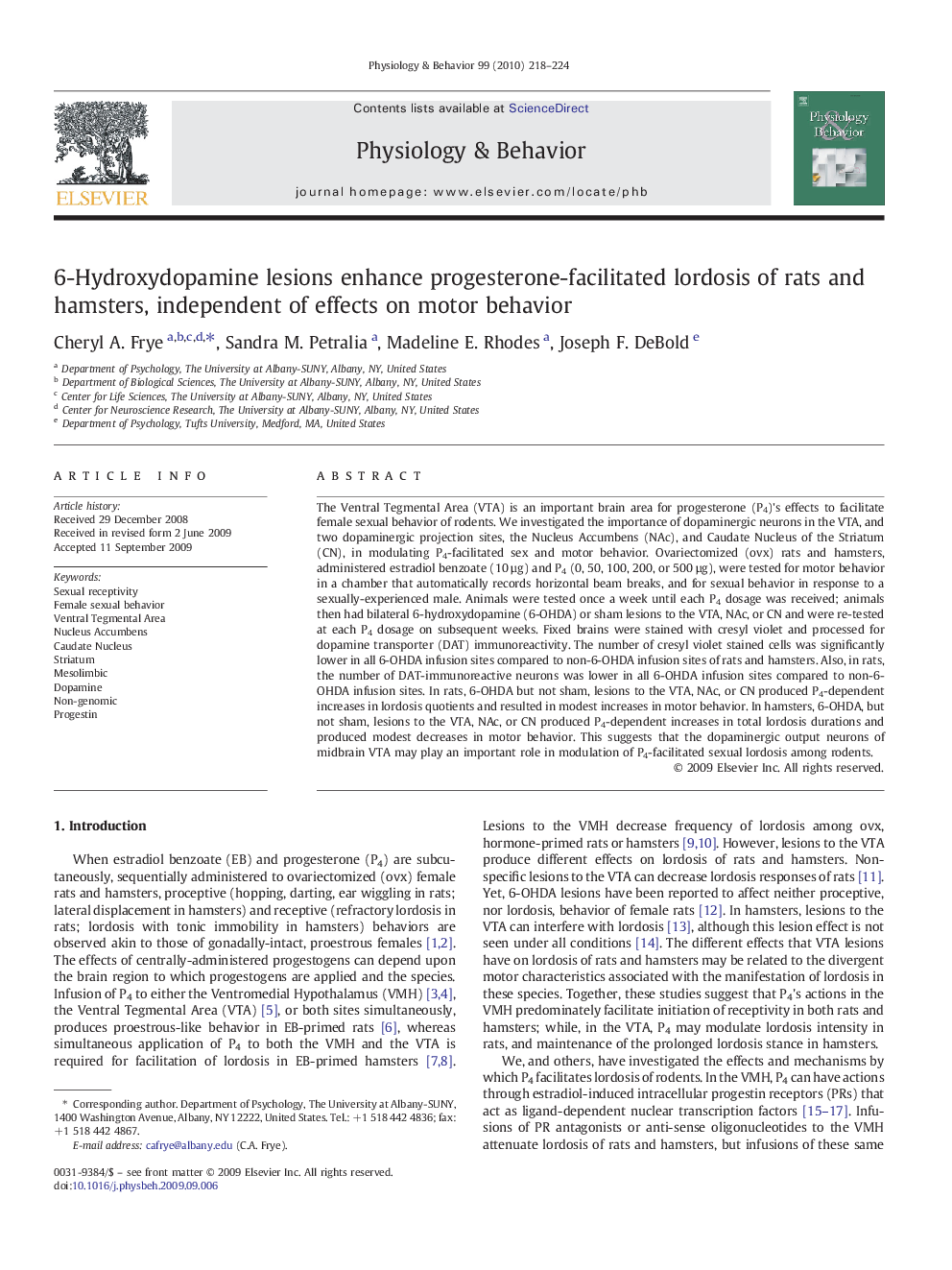| کد مقاله | کد نشریه | سال انتشار | مقاله انگلیسی | نسخه تمام متن |
|---|---|---|---|---|
| 2845037 | 1166375 | 2010 | 7 صفحه PDF | دانلود رایگان |

The Ventral Tegmental Area (VTA) is an important brain area for progesterone (P4)'s effects to facilitate female sexual behavior of rodents. We investigated the importance of dopaminergic neurons in the VTA, and two dopaminergic projection sites, the Nucleus Accumbens (NAc), and Caudate Nucleus of the Striatum (CN), in modulating P4-facilitated sex and motor behavior. Ovariectomized (ovx) rats and hamsters, administered estradiol benzoate (10 µg) and P4 (0, 50, 100, 200, or 500 µg), were tested for motor behavior in a chamber that automatically records horizontal beam breaks, and for sexual behavior in response to a sexually-experienced male. Animals were tested once a week until each P4 dosage was received; animals then had bilateral 6-hydroxydopamine (6-OHDA) or sham lesions to the VTA, NAc, or CN and were re-tested at each P4 dosage on subsequent weeks. Fixed brains were stained with cresyl violet and processed for dopamine transporter (DAT) immunoreactivity. The number of cresyl violet stained cells was significantly lower in all 6-OHDA infusion sites compared to non-6-OHDA infusion sites of rats and hamsters. Also, in rats, the number of DAT-immunoreactive neurons was lower in all 6-OHDA infusion sites compared to non-6-OHDA infusion sites. In rats, 6-OHDA but not sham, lesions to the VTA, NAc, or CN produced P4-dependent increases in lordosis quotients and resulted in modest increases in motor behavior. In hamsters, 6-OHDA, but not sham, lesions to the VTA, NAc, or CN produced P4-dependent increases in total lordosis durations and produced modest decreases in motor behavior. This suggests that the dopaminergic output neurons of midbrain VTA may play an important role in modulation of P4-facilitated sexual lordosis among rodents.
Journal: Physiology & Behavior - Volume 99, Issue 2, 9 February 2010, Pages 218–224